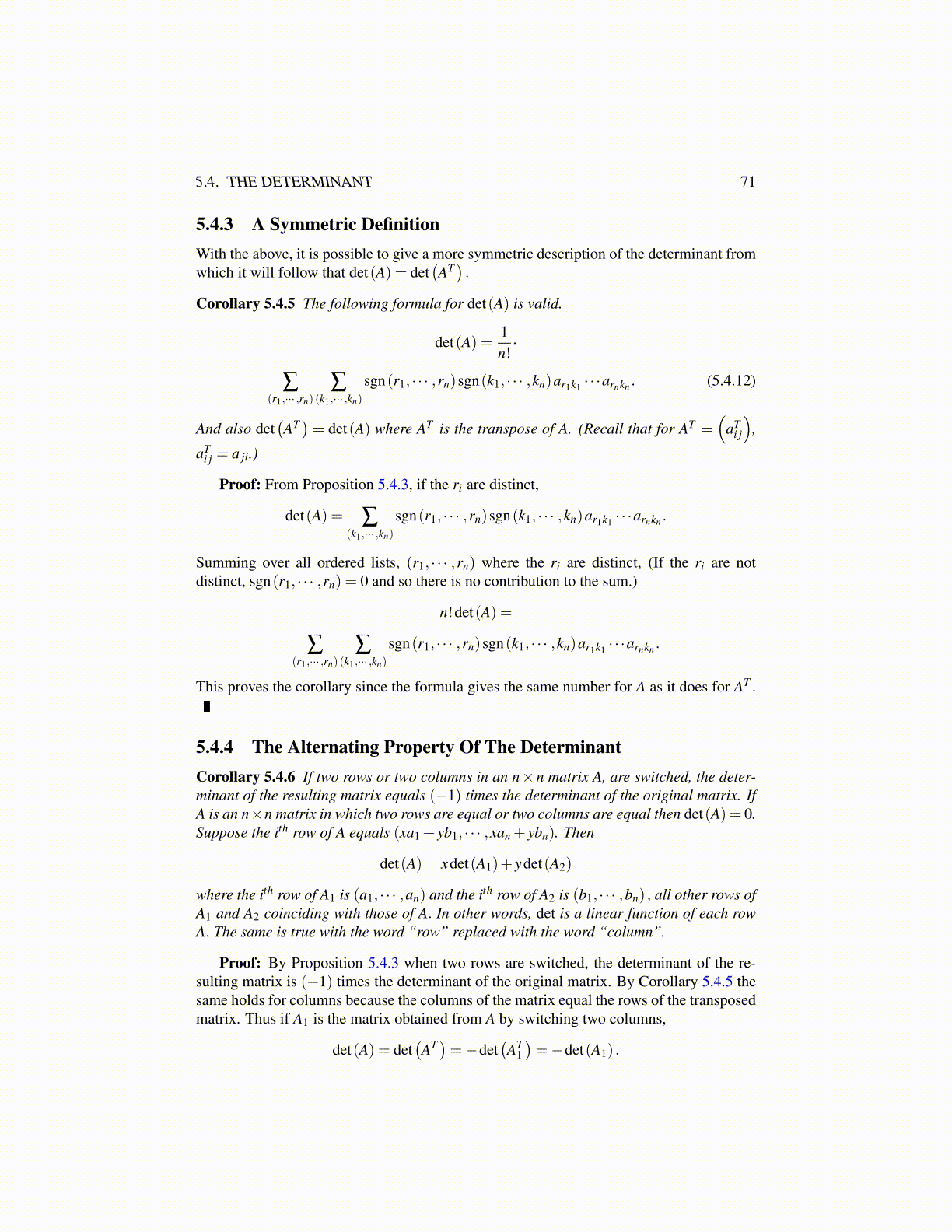
5.4. THE DETERMINANT 71
5.4.3 A Symmetric DefinitionWith the above, it is possible to give a more symmetric description of the determinant fromwhich it will follow that det(A) = det
(AT).
Corollary 5.4.5 The following formula for det(A) is valid.
det(A) =1n!·
∑(r1,··· ,rn)
∑(k1,··· ,kn)
sgn(r1, · · · ,rn)sgn(k1, · · · ,kn)ar1k1 · · ·arnkn . (5.4.12)
And also det(AT)= det(A) where AT is the transpose of A. (Recall that for AT =
(aT
i j
),
aTi j = a ji.)
Proof: From Proposition 5.4.3, if the ri are distinct,
det(A) = ∑(k1,··· ,kn)
sgn(r1, · · · ,rn)sgn(k1, · · · ,kn)ar1k1 · · ·arnkn .
Summing over all ordered lists, (r1, · · · ,rn) where the ri are distinct, (If the ri are notdistinct, sgn(r1, · · · ,rn) = 0 and so there is no contribution to the sum.)
n!det(A) =
∑(r1,··· ,rn)
∑(k1,··· ,kn)
sgn(r1, · · · ,rn)sgn(k1, · · · ,kn)ar1k1 · · ·arnkn .
This proves the corollary since the formula gives the same number for A as it does for AT .
5.4.4 The Alternating Property Of The DeterminantCorollary 5.4.6 If two rows or two columns in an n×n matrix A, are switched, the deter-minant of the resulting matrix equals (−1) times the determinant of the original matrix. IfA is an n×n matrix in which two rows are equal or two columns are equal then det(A) = 0.Suppose the ith row of A equals (xa1 + yb1, · · · ,xan + ybn). Then
det(A) = xdet(A1)+ ydet(A2)
where the ith row of A1 is (a1, · · · ,an) and the ith row of A2 is (b1, · · · ,bn) , all other rows ofA1 and A2 coinciding with those of A. In other words, det is a linear function of each rowA. The same is true with the word “row” replaced with the word “column”.
Proof: By Proposition 5.4.3 when two rows are switched, the determinant of the re-sulting matrix is (−1) times the determinant of the original matrix. By Corollary 5.4.5 thesame holds for columns because the columns of the matrix equal the rows of the transposedmatrix. Thus if A1 is the matrix obtained from A by switching two columns,
det(A) = det(AT )=−det
(AT
1)=−det(A1) .